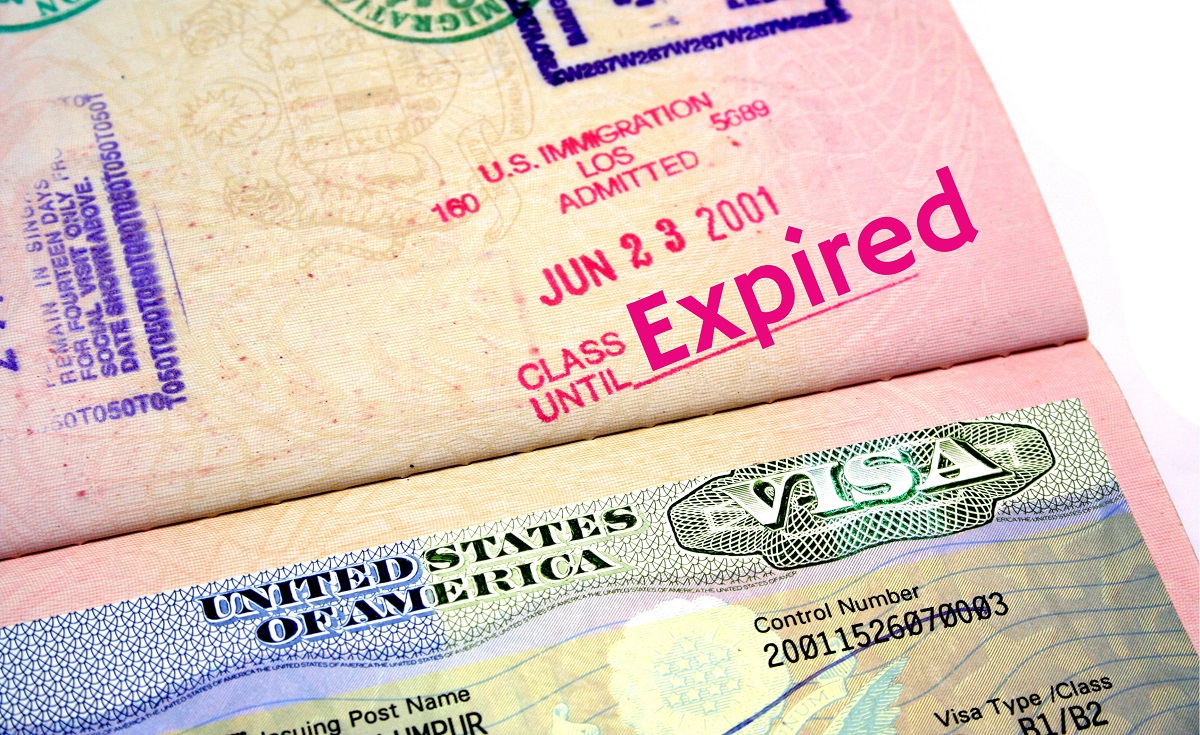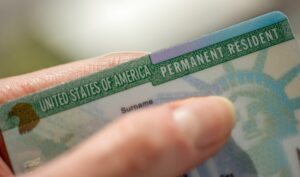
Filing a spouse petition can be one of the most important steps in reuniting with your loved one in the United States. However, the process can be complex, and even small errors can cause delays or lead to a denial. If you’re looking to file a spouse petition, it’s essential to understand the common mistakes many applicants make and how you can avoid them. In this post, we will walk you through the 7 most common mistakes people make when filing their spouse petition and provide tips on how to avoid them to ensure your spouse's green card application process is successful.
Whether you’re filing as a U.S. citizen spouse or a permanent resident spouse, making sure your petition is done correctly can save you time and stress. Let’s dive into these common mistakes so you can file your spouse petition with confidence!
Overview of the Spouse Petition Package
7 Mistakes That Can Derail Your Petition
- Insufficient Evidence of a Bona Fide Marriage
- Failing to Document the Termination of Previous Marriages
- Omitted or Inaccurate Information on Form I-130
- Failure to Submit Correct Fees for a Spouse Petition
- Not Understanding How Status Affects Process
- Failing to Submit Translations of Foreign Documents
- Missing Documents or Incorrect Documents
Overview of the Spouse Petition Package (Form I-130)
If you’re planning to help a spouse immigrate to the United States, you’ll likely need to file Form I-130 (Petition for Alien Relative) and Form I-130A (Supplemental Information for a Spouse Beneficiary) with U.S. Citizenship and Immigration Services (USCIS). These forms start the immigration journey. It’s wise to educate yourself on the process and requirements to minimize the potential for problems and delays. After all, a quick approval of the spouse petition is the goal to help your husband, wife, or partner immigrate.
USCIS forms and requests for benefits can be deceptively simple. Many people assume that the immigration agency will request additional information if necessary or point out problems. This isn't always the case. The burden is on filers to prove you are eligible for benefits. CitizenPath has on online service backed by live customer support to help you through the process. In the case of a spouse petition, here are 7 problem areas to review as you prepare Form I-130 and I-130A.
1. Insufficient Evidence of a Bona Fide Marriage
One of the most critical factors in a spouse petition is proving that your marriage is legitimate and not entered into solely for immigration purposes. USCIS requires strong evidence that your marriage is bona fide, meaning it is real and not just for immigration benefits.
Common Mistake
Some applicants fail to provide enough proof of their relationship. A marriage certificate alone is not sufficient. You need to provide documentary evidence that the marriage is established for the purpose and intent of building a life together.
How to Avoid This Mistake on Your Spouse Petition
To strengthen your case, submit as many documents as possible to demonstrate your marriage is genuine. This includes:
- Joint bank account statements
- Joint tax returns
- Photos from weddings, holidays, or trips together
- Emails, chats, or letters between you and your spouse
- Affidavits from friends and family attesting to the authenticity of your relationship
USCIS wants to see evidence that your marriage is more than just a paper arrangement, so the more documentation you can provide, the better.
2. Failing to Document the Termination of Previous Marriages
If either you or your spouse was previously married, you must provide proof that all prior marriages were legally terminated before your current marriage. This includes divorce decrees or death certificates, as applicable.
Common Mistake
Some applicants forget to include divorce decrees or fail to provide the correct legal documentation to prove that previous marriages were ended. This mistake can delay processing or result in a denial of your petition.
How to Avoid This Mistake on Your Spouse Petition
When filing your spouse petition, make sure to include:
- Certified copies of divorce decrees or annulments from any previous marriages; or
- Death certificates if a previous spouse passed away.
Ensure these documents are in English or accompanied by a certified translation if necessary. By providing complete and accurate documentation, you’ll help prevent unnecessary delays in the processing of your spouse petition.
3. Omitted or Inaccurate Information on Form I-130
One of the simplest but most costly mistakes when filing your spouse petition is leaving out crucial information or providing inaccurate details. USCIS requires accurate information for every part of the petition, from your names to your dates of birth.
Common Mistakes
Some petitioners may fail to account for details because they assume it is trivial or not important. Be thorough. If asked for informtion, answer truthfully and completely. Be careful about:
- Misspelled names or incorrect dates of birth;
- Omitting information such as your spouse’s current address or other contact details; or
- Providing incorrect answers to questions on the form (e.g., how long you’ve been married or your immigration history).
How to Avoid These Mistakes on Your Spouse Petition
Take extra care when completing your spouse petition to ensure that all information is accurate and consistent with your supporting documents.
- Full names, including any middle names;
- Accurate dates, especially your spouse’s date of birth; and
- Details of your marriage, including the correct wedding date and location.
It’s essential to review everything carefully before submitting. Small mistakes can cause delays or result in an RFE (Request for Evidence), which only lengthens the process.
4. Failure to Submit Correct Fees for a Spouse Petition
USCIS charges filing fees for processing Form I-130, and failing to submit the correct fees is a common mistake that can lead to delays or rejection of your spouse petition.
Common Mistakes
Although paying the fee is fairly straight forward, there are several ways to error:
- Submitting an incorrect fee amount;
- Paying the fee with an incorrect payment method; or
- Making the check payable to the wrong agency.
How to Avoid These Mistakes on Your Spouse Petition
Check the latest fee schedule on the USCIS website to make sure you're submitting the correct amount. If you’re filing multiple forms (e.g., I-130 and I-485), the total fee might be higher, so be sure to include the correct payment for all forms.
Paying by credit card (via Form G-1450) can sometimes lead to problems. If USCIS encounters any problems processing your card, the petition package gets rejected.
One of the most reliable ways to make payment is a cashier's check or money order. If you're submitting payment via check or money order, make sure it is signed and payable to the "U.S. Department of Homeland Security." Pay close attention to the payment method and the amount to avoid unnecessary delays.
5. Not Understanding How Status Affects Process
If your spouse is already in the United States and is not in lawful immigration status, it can complicate the spouse petition process. Applicants often assume that the petition will resolve any immigration status issues, but this isn’t the case.
Common Mistakes
Some petitioners and beneficiaries may assume that qualifying for Form I-130 means that they also qualify for a green card. This is not the case.
- Failing to realize that your spouse’s out-of-status situation could affect their ability to adjust status or apply for a green card; or
- Failing to disclose the spouse’s immigration history, including overstays, unlawful presence, or prior visa issues.
How to Avoid These Mistakes on Your Spouse Petition
It's important to understand that eligibility for Form I-130 and eligibility for a green card are two different things. Form I-130 establishes that you have a qualifying relationship. After you've established the existence of the qualifying relationship, that's when the beneficiary is considered for other green card criteria.
Generally, the immediate relatives of U.S. citizens (spouse, parent, and unmarried children) may adjust status to permanent resident after a visa overstay. This assumes they entered the U.S. lawfully but stayed too long.
This forgiveness is not extended to any other kind of qualifying relationships. Thus, it's important to understand the next step. If the beneficiary accrued time in an unlawful presence and is not an immediate relative or if the beneficiary entered the U.S. without inspection, you're going to need help from an immigration attorney. Speak to immigration attorney before filing and before the beneficiary departs the United States (if applicable).
6. Failing to Submit Translations of Foreign Documents
If you are submitting any documents to USCIS that are not in English, you must provide certified translations. This includes marriage certificates, birth certificates, or any other documents in a foreign language.
Common Mistakes
USCIS may reject petitions or issue a Request for Evidence if foreign language documents are not accompanied with a proper English translation. Common issues include:
- Failing to provide certified translations of documents in a foreign language;
- Submitting translations that are not accurate or do not meet USCIS standards; or
- Submitting the translation but forgetting to include the foreign language document.
How to Avoid These Mistakes on Your Spouse Petition
If your documents are in a foreign language, make sure to include a certified translation along with the foreign language document. This means the translation must include a certification statement that the translation is accurate and complete. Having certified translations will help USCIS process your petition without unnecessary delays.
7. Missing Documents or Incorrect Documents
Lastly, submitting incomplete or incorrect supporting documents is one of the top reasons for delays in processing a spouse petition. This includes missing required forms or providing outdated versions of documents.
Common Mistakes
One of the most common reasons USCIS can't process Form I-130 is because the petitioner submitted inadequate evidence, for example:
- Not submitting all required documents, such as a valid marriage certificate, birth certificates, or immigration documents;
- Submitting copies of documents instead of the originals or certified copies;
- Using outdated versions of the forms.
How to Avoid These Mistakes on Your Spouse Petition
Make sure you check the USCIS website for the most up-to-date list of required documents. Or use CitizenPath to prepare your petition. We provide you with a customized checklist of supporting documents for your situation. Double-check your paperwork to ensure you have everything necessary for a complete petition:
- Marriage certificate (certified copy);
- Petitioner’s proof of U.S. citizenship or lawful permanent residence; and
- Evidence of prior marriages’ termination (if applicable).
Take your time to carefully prepare your spouse petition with all the required documents to avoid costly delays.
Filing a spouse petition is a crucial step in reuniting with your loved one, but it requires careful attention to detail. By avoiding the seven common mistakes outlined above, you can help ensure USCIS processes your petition smoothly and efficiently. Remember, taking the time to double-check your information, submit accurate documentation, and pay the correct fees can save you time and stress in the long run.
How CitizenPath Helps You
At CitizenPath, we’re here to help you navigate and simplify the immigration process. We provide simple, affordable, step-by-step guidance through USCIS immigration applications. Individuals, attorneys and non-profits use the service on desktop or mobile device to prepare immigration forms accurately, avoiding costly delays. CitizenPath allows users to try the service for free and provides a 100% money-back guarantee that USCIS will approve the application or petition. We provide support for the Immigrant Visa Petition Package (Form I-130/I-130A), Affidavit of Support Package (Form I-864), and several other immigration services.
Sign up for our newsletter to receive regular tips and updates that will empower you and your family during every stage of your immigration journey.
Want more immigration tips and how-to information for your family?
Sign up for CitizenPath’s FREE immigration newsletter and
SAVE 10%
on our immigration services









